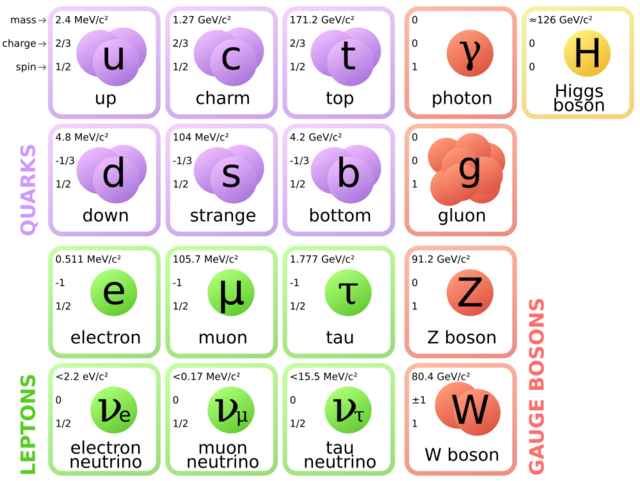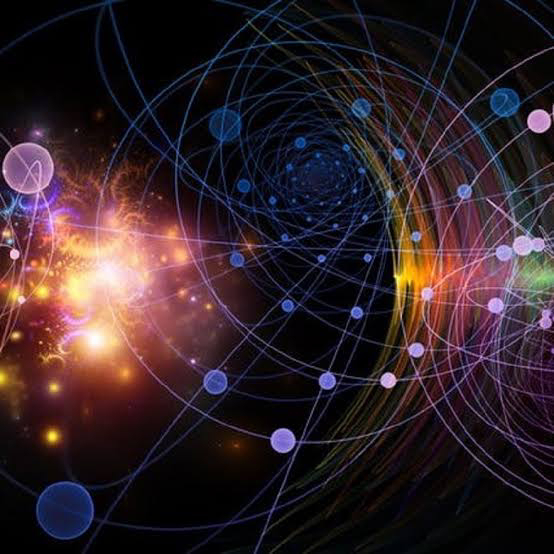What are quantum particles?
What's the smallest thing in the universe? take your ex's mobile phone and break it in half, then in half again and keep carrying on where would you end up? Could you keep going forever? or would you find a set of individual building blocks out of which everything is made?
Physicists have found that matter is made of fundamental particles, the smallest things in the universe. particles interact with each other according to a theory called the 'standard model'.The standard model is a remarkably elegant encapsulation of the strange quantum world of indivisible infinitely small particles. It also covers the forces that govern how particles move, interact and bind together to give shape to the world around us.So how does it work? Zooming in on the fragments of the mobile, we see molecules made of atoms bound up together. A molecule is the smallest unit of any chemical compound. An atom is the smallest unit of any element in the periodic table.But the atom is not the smallest unit of matter. Experiment found each atom has a tiny dense nucleus surrounded by a cloud of even tinier electrons.
The electrons are, as far as we know, one of the fundamental indivisible building blocks of the universe. It was the first standard model particle ever discovered. Electrons are bound to an atom's nucleus by electromagnetism.
They attract each other by exchanging particles called photons. Which are quanta of light that carry the electromagnetic force, one of the fundamental forces of the standard model. The nucleus has more secrets to reveal as it contains protons and neutrons. Though once thought to be fundamental particles on their own, in 1968 physicists found that protons and neutrons are actually made of quarks. Which are indivisible.
A proton contains two up quarks and one down quark. A neutron contains two down quarks and one up. The nucleus is held together by the strong force, another fundamental force of the standard model. Just as photons carry the electromagnetic force, particles called gluons carry the strong force. Electrons, together with up and down quarks, seem to be all we need to build atoms and therefore describe normal matter.
However, a high energy experiment reveals that there are actually six quarks down and up, strange and charming and bottom and top and they come in a wide range of masses. The same was found for electrons, which have heavier siblings called the muon and the tau.
Why are there three and only three different versions of each of the particles? This remains a mystery. These heavy particles are only produced for very brief moments in high energy collisions and are not seen in everyday life. This is because they decay very quickly into the lighter particles. Such decay involves the exchange of force carrying particles called the W and Z, which unlike the photon have mass. They carry the weak force, the final force of the standard model. This same force allows protons and neutrons to transform into each other, a vital part of the fusion interactions that drive the sun. To observe the W and Z directly.
We needed the high energy collisions provided by particle accelerators. There's another kind of standard model particle called neutrinos. These only interact with other particles through the weak force. Trillions of neutrinos, many generated by the sun, fly through us every second. Measurements of weak interactions found that there are different kinds of neutrons associated with the electrons muon and tau.
All these particles also have antimatter versions. Which have the opposite charge but are otherwise identical. Matter and antimatter particles are produced in pairs in high energy collisions and they annihilate each other when they meet. The final particle of the standard model is the Higgs Boson, a quantum ripples in the background energy field of the universe interacting with this field is how all the fundamental matter particles acquire mass according to the standard model particles acquire mass according to the standard model. The ATLAS experiment on the large Hadron collider is studying the standard model in depth by taking precise measurements of the particles and forces that make up the universe. ATLAS physicists can look for answers to mysteries not explained by the standard model.
For example, how does gravity fit in? What is the real relationship between force carriers and matter particles? How can we describe "dark matter ", which makes up most of the mass in the universe but remains unaccounted for? While the standard model provides a beautiful explanation for the world around us, there is still a universe's worth of mysteries left to explore.






Comments
Post a Comment